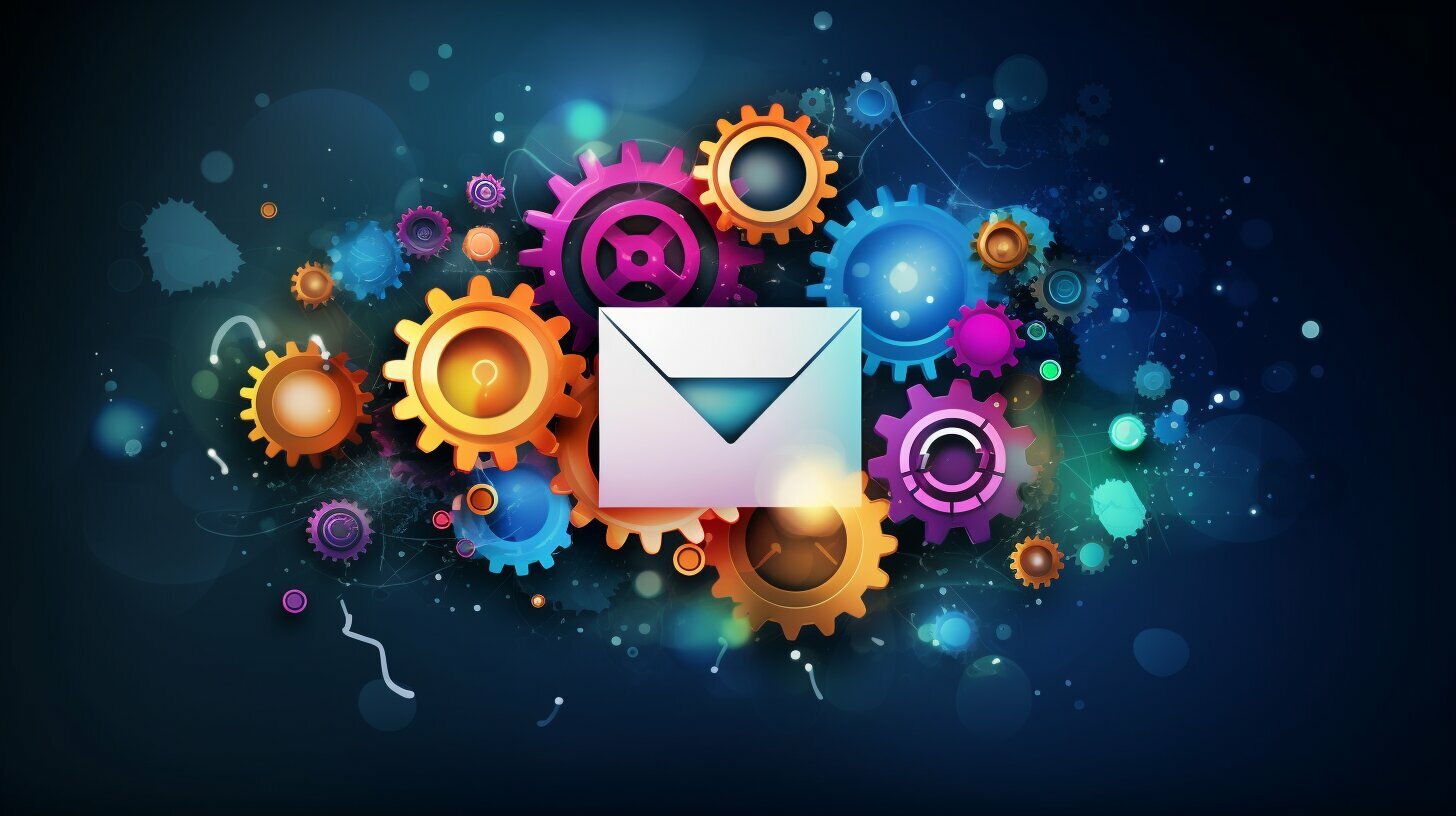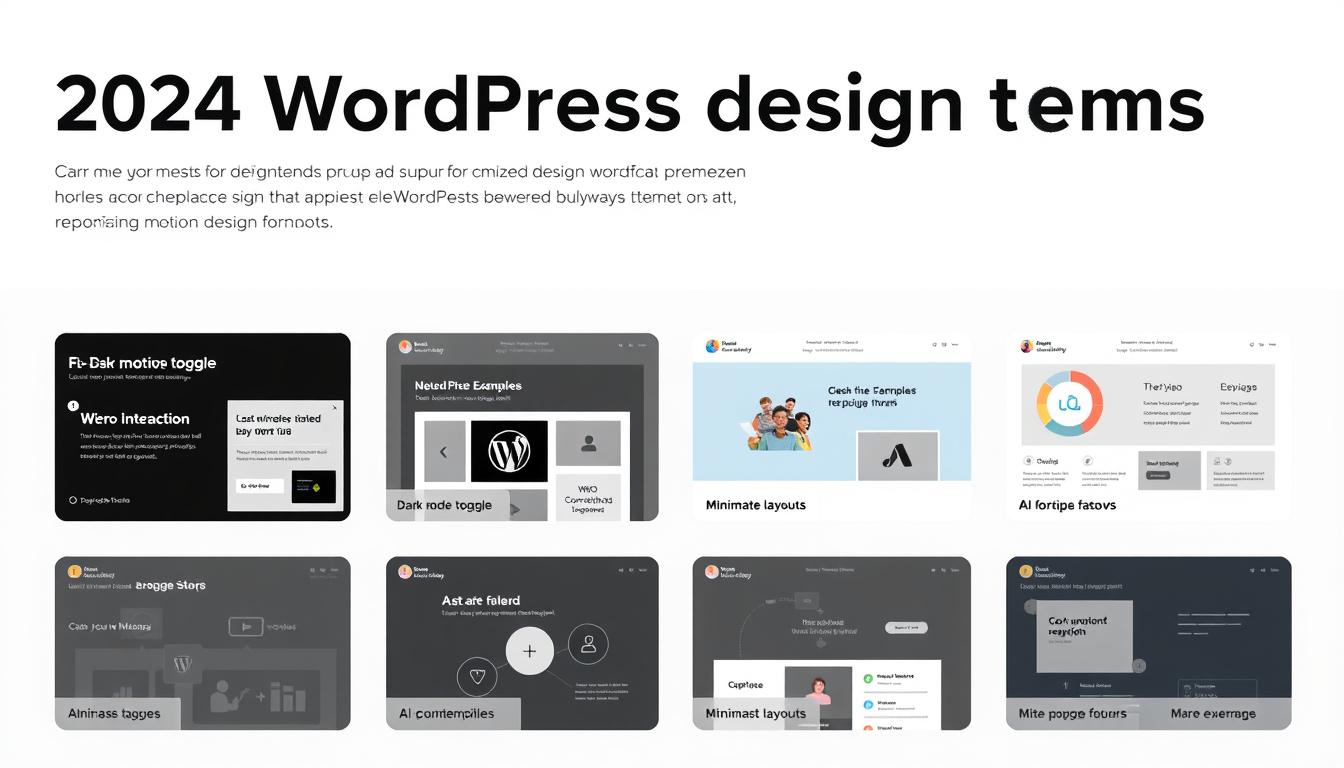Welcome to our article on artificial intelligence in email marketing. As the world of digital communications evolves, it’s becoming increasingly important to keep up with the latest tools and technologies. AI is rapidly gaining popularity as a game-changer when it comes to reaching your target audience through email marketing.
Many businesses are already using AI to streamline their email campaigns, and the results speak for themselves. With AI, you can gain insights into your audience, improve engagement rates, and optimize your campaigns for maximum effectiveness. In this article, we’ll explore the benefits of using AI in your own email marketing efforts.
Key Takeaways
- Artificial intelligence can revolutionize your email marketing campaigns.
- AI can improve personalization, segmentation, and audience targeting in your emails.
- AI can suggest content, optimize send times, and automate tasks for increased efficiency.
- AI-powered analytics and reporting can provide valuable insights into your campaigns’ performance.
- Implementing AI requires careful planning and execution, but the benefits are well worth the effort.
How Artificial Intelligence Enhances Email Marketing
When it comes to email marketing, the power of artificial intelligence (AI) cannot be ignored. AI has the ability to transform the effectiveness of email campaigns, providing a range of benefits that wouldn’t be possible through manual processes alone.
At its core, AI is all about using data to make better decisions. By leveraging the vast amounts of data available to us today, we can gain a deeper understanding of our audience and use this knowledge to deliver more personalized and relevant content.
Here are just a few ways in which AI can enhance your email marketing efforts:
| Benefits of AI in Email Marketing |
|---|
| Personalization: AI algorithms can analyze data points such as previous purchases, browsing history, and demographic information to create highly targeted and personalized email content. |
| Improved Audience Targeting: With AI, you can identify the ideal time to send emails to each subscriber, as well as the types of content that will be most engaging to them. |
| Email Subject Line Optimization: AI can help you create compelling subject lines that grab the reader’s attention and increase open rates. |
By automating tasks and making data-driven decisions, AI can help you optimize your campaigns for maximum impact. Whether you’re looking to increase conversions, boost engagement, or simply improve your email deliverability, AI is a powerful tool that can help you achieve your goals.
Personalization and Segmentation with AI
When it comes to email marketing, personalization is one of the key factors that can make or break your campaign’s success. With AI, we can take personalization to a whole new level. By analyzing data such as purchase history, browsing behavior, and demographic information, AI can tailor each email to the individual recipient’s interests and preferences.
| Traditional email marketing | AI-powered email marketing |
|---|---|
| Sends the same email to every subscriber | Creates unique emails for each recipient |
| Relies on guesswork to personalize content | Uses data to personalize content |
| May send irrelevant content to some recipients | Delivers relevant content to each recipient |
Segmentation is another crucial aspect of email marketing that can greatly benefit from AI. By dividing your subscriber list into smaller groups based on shared characteristics, AI can help you send targeted emails that are more likely to resonate with each group.
“Segmentation is key to personalization, and personalization is key to engagement.” – Matthew Sweezey, Marketing Insights Lead at Salesforce
For example, if you’re a clothing retailer, you can use AI to segment your email list based on factors such as gender, age, and purchase history. You can then send targeted emails featuring products that are most likely to appeal to each segment. This not only helps improve engagement, but it also increases the chances of driving sales.
Overall, AI can help us take personalization and segmentation to the next level, allowing us to create more effective and engaging email campaigns that deliver real results.
Improved Audience Targeting with AI
With the help of artificial intelligence in email marketing, we can target the right audience for our campaigns. AI-powered tools can analyze data and provide insights on customer behavior, allowing us to tailor our email content to specific segments of our audience.
In addition to analyzing data, AI can also use machine learning algorithms to improve audience targeting over time. As we gather more data on our audience, AI can use this information to adjust and optimize our email campaigns for even better results.
Identifying Customer Segments with AI
One of the key benefits of using AI in email marketing is the ability to identify specific customer segments based on behavior and other factors. By analyzing data such as purchase history, website activity, and email engagement, AI can help us create segments based on customer interests and preferences.
| Customer Segment | Key Characteristics |
|---|---|
| New Customers | Recently signed up for our email list |
| Active Shoppers | Make frequent purchases on our website |
| Discount Seekers | Frequently redeem coupon codes or other discounts |
Using these segments, we can create targeted email campaigns that speak directly to the interests and needs of each group. For example, we could offer a special discount to our Discount Seekers segment, while sending a personalized welcome email to our New Customers segment.
Optimizing Email Content for Each Segment
In addition to identifying customer segments, AI can also help us optimize our email content for each group. By analyzing past email performance and customer behavior, AI can suggest content that is most likely to resonate with each segment.
For example, if we know that our Active Shoppers segment is most likely to respond to sales and promotions, AI may recommend including discount codes or special offers in our email content for that group.
By using AI to optimize our email content for each segment, we can increase engagement and drive better results from our campaigns.
Optimizing Email Subject Lines with AI
Email subject lines are the first impression your audience has of your email campaign. It’s important to make sure they are compelling enough to warrant opening the email. This is where artificial intelligence comes in.
Using AI, we can analyze data from previous successful email campaigns to determine the characteristics of the subject lines that resonated most with the audience. We can then use this information to create subject lines that are more likely to entice your audience to open your email.
Additionally, AI can help test different subject lines to determine which ones perform best. By analyzing opens, clicks, and conversion rates, AI can assist in selecting the most effective subject line for your specific audience.
With the help of AI, you can create subject lines that are tailored to your audience and optimized for maximum engagement, ultimately leading to better email campaign performance.
AI-Powered Content Recommendations in Emails
One of the biggest challenges in email marketing is crafting content that resonates with subscribers. With AI-powered content recommendations, however, you can deliver personalized and relevant content to your audience for increased engagement and conversions.
By analyzing subscriber data such as their past purchase history, browsing behavior, and email engagement, AI algorithms can suggest the most suitable content to include in your email campaigns. This could include product recommendations, relevant blog posts, or even personalized offers.
| Benefits of AI-Powered Content Recommendations | Examples |
|---|---|
| Increased relevance: AI-powered content recommendations ensure that each subscriber receives personalized content that aligns with their interests and preferences. | Product recommendations based on past purchases or browsing behavior |
| Improved engagement: By delivering content that resonates with subscribers, you can boost email open and click-through rates. | Personalized blog post recommendations based on reading history |
| Higher conversions: Relevant content increases the likelihood of subscribers making a purchase or taking desired action. | Customized offers based on past purchase history or abandoned cart items |
By utilizing AI-powered content recommendations in your email marketing campaigns, you can take the guesswork out of content creation and ensure that each email delivers maximum value to your subscribers.
Email Send Time Optimization with AI
One of the most critical aspects of an email campaign is timing. It’s essential to send emails when the target audience is most likely to engage with them. Fortunately, AI can help businesses determine the best time to send emails by analyzing data patterns.
With AI-powered send time optimization, companies can increase open rates and maximize engagement. By analyzing data from previous campaigns, AI can determine the ideal time to send emails to specific segments of your audience.
With the help of AI, we can send emails during the time when recipients are most likely to engage with them. It’s not just about sending emails at the right time; it’s about sending them when the target audience is most receptive. By doing so, we can improve engagement rates and increase the chances of converting leads into customers.
At our company, we utilize AI to analyze data on customer behavior and engagement. Based on this data, we schedule emails for each individual on our email list at the most opportune time for them. This personalized approach has led to a significant increase in open and click-through rates for our email campaigns.
By taking advantage of AI-powered send time optimization in your email marketing campaigns, you can improve the effectiveness of your messaging and increase ROI.
Predictive Analytics and AI in Email Marketing
Artificial intelligence in email marketing has revolutionized the way we analyze and predict customer behavior. By leveraging AI-powered predictive analytics, we can better understand our audience, improve engagement rates, and optimize our email marketing campaigns for success.
With AI, we can automatically analyze large amounts of data to identify patterns and trends that would otherwise be difficult to detect. By examining user behaviors, preferences, and purchase histories, we can predict what our customers are likely to do next and tailor our email marketing strategies accordingly.
| Benefits of using predictive analytics and AI in email marketing include: |
|---|
| Improved segmentation: By analyzing customer data, we can create more targeted and relevant emails that resonate with specific audiences. |
| Better timing: With AI, we can determine the best times to send emails based on customer behaviors, open rates, and other data. |
| Higher conversions: By using predictive analytics, we can create emails that are more likely to convert, based on customer preferences, behaviors, and purchase histories. |
How predictive analytics and AI works in email marketing
In order to use predictive analytics and AI effectively in email marketing, we first need to gather and analyze data on our customers. This data might include information on their demographics, interests, past purchases, and online behaviors.
Once we have this data, we can use AI algorithms to analyze it and identify patterns, trends, and correlations. For example, we might use machine learning to identify which customers are most likely to open our emails, or to predict which products they are most likely to buy based on their past behavior.
From there, we can use this information to create highly personalized and targeted email campaigns that are optimized for success. For example, we might send out different email campaigns to different audience segments, based on their past behaviors and preferences.
“By using AI and predictive analytics to optimize our email campaigns, we can achieve higher engagement rates, better customer loyalty, and increased sales.”
The future of predictive analytics and AI in email marketing
As AI and machine learning continue to evolve, we can expect to see even more sophisticated and accurate predictive analytics in email marketing. In the future, we may be able to use AI to automatically create and optimize email campaigns, without any human input whatsoever.
However, as with any new technology, there are also potential challenges and concerns around incorporating AI into email marketing. For example, we need to ensure that our AI algorithms are unbiased and fair, and that they don’t inadvertently discriminate against certain groups of people.
Overall, though, the benefits of using predictive analytics and AI in email marketing far outweigh the potential risks. By leveraging AI to create more personalized, targeted, and effective email campaigns, we can achieve higher engagement rates, better customer loyalty, and increased sales.
AI-Driven Email Automation
One of the most significant benefits of using AI in email marketing is the ability to automate various tasks. By automating emails, you can save time and increase efficiency. You can set up triggered emails to be sent when a user takes a specific action, such as filling out a form or making a purchase.
Using AI algorithms, you can also automate email content. For example, if a user abandons their cart, you can automatically send them an email with the items they left behind or offer them a discount to complete their purchase. This type of automation can lead to increased sales and improved customer retention.
At our company, we believe that AI-driven email automation is the future of email marketing. By using AI to automate certain tasks, your team can focus on developing email content and strategies that will maximize engagement and drive conversions.
AI for A/B Testing and Email Campaign Optimization
In email marketing, A/B testing is an essential way to optimize campaigns and improve results. With artificial intelligence, A/B testing can be taken to the next level.
AI can analyze large amounts of data and provide insights on what works and what doesn’t, allowing us to make more informed decisions. By testing multiple variations of subject lines, content, and send times, AI can quickly determine which version will deliver the best results. This saves time and improves efficiency, as we can make data-driven decisions without having to manually sift through large amounts of data.
In addition, AI can also help with the timing of A/B tests. Instead of running tests for an entire week, for example, AI can determine the optimal time to end the test based on statistical significance, making the process more efficient and reducing the risk of inconclusive results.
Overall, incorporating AI into A/B testing can lead to more successful email campaigns and better ROI.
Enhanced Email Deliverability with AI
One of the challenges that email marketers face is ensuring that their messages are delivered to the intended recipients and not filtered into spam folders. This is where AI can come in handy, as it can help improve email deliverability and increase the chances of your emails being opened and read by your target audience.
AI-powered email deliverability tools can analyze a range of factors that impact deliverability, such as sender reputation, email content, and recipient engagement. By using machine learning algorithms to process this data, these tools can identify patterns and predict which messages are likely to be flagged as spam.
For example, AI can help you avoid using spam trigger words and phrases in your subject lines and email content. It can also detect and remove broken links and formatting issues that may reduce the credibility of your messages.
By using AI-driven email deliverability tools, you can protect your sender reputation, increase engagement rates, and improve your overall email marketing performance.
AI-powered Email Analytics and Reporting
When it comes to measuring the success of your email marketing campaigns, there are plenty of metrics to consider, including open rates, click-through rates, conversion rates, bounce rates, and more. But analyzing these metrics and gaining valuable insights can be a time-consuming and tedious process. Fortunately, AI can help make this task much easier.
With AI-powered email analytics and reporting, you can quickly and easily track the performance of your email campaigns and gain valuable insights into your subscribers’ behavior. AI algorithms can analyze data from multiple sources, including email service providers, web analytics tools, and customer relationship management (CRM) systems, to provide a comprehensive picture of your email campaign performance.
AI can also help you identify trends and patterns in your subscribers’ behavior, allowing you to adjust your email marketing strategies accordingly. For example, if you notice that a certain type of email is performing particularly well, you can create more of that type of content in the future.
Benefits of AI-powered Email Analytics and Reporting
Here are some of the key benefits of using AI for email analytics and reporting:
- Time savings: AI can analyze large volumes of data much more quickly than humans, saving you time and effort.
- Better insights: AI can uncover insights that might be difficult for humans to find, such as subtle patterns in subscriber behavior.
- Improved decision-making: With more accurate data and insights at your disposal, you can make better-informed decisions about your email marketing strategies.
- Increased efficiency: By automating the reporting process, you can spend more time focusing on other aspects of your email marketing campaigns.
Examples of AI-powered Email Analytics and Reporting Tools
There are a variety of AI-powered email analytics and reporting tools available on the market today. Here are just a few examples:
| Tool | Description |
|---|---|
| Mixmax | Mixmax is an email productivity platform that includes advanced email analytics and reporting features. With Mixmax, you can track email opens and clicks, schedule emails to be sent later, and even create personalized video messages for your subscribers. |
| SparkPost | SparkPost is an email delivery and analytics platform that uses AI to provide real-time insights into your email campaigns. With SparkPost, you can track email engagement metrics, monitor email deliverability, and analyze subscriber behavior. |
| Salesforce Marketing Cloud | Salesforce Marketing Cloud is a powerful email marketing platform that includes AI-powered analytics and reporting features. With Marketing Cloud, you can track email performance metrics, create custom dashboards, and even use AI to predict which subscribers might be at risk of unsubscribing. |
These are just a few examples of the many AI-powered email analytics and reporting tools available on the market today. Each tool has its own unique features and capabilities, so it’s important to research your options and choose the one that best fits your needs.
Case Studies: Real-World Examples of AI in Email Marketing
Implementing artificial intelligence into your email marketing strategy can seem daunting, but seeing the results in action can be truly impressive. Here are some real-world examples of companies that have successfully utilized AI in their email marketing campaigns:
| Company | AI Feature | Results |
|---|---|---|
| The Athletic | Personalized content recommendations | 33% increase in click-through rates |
| eHarmony | Segmentation and personalization | 72% increase in email revenue |
| North Face | Predictive analytics | 60% higher conversion rate compared to non-AI campaigns |
These companies’ success stories serve as inspiration for what is possible when utilizing AI technology in email marketing. By improving segmentation, personalization, and content recommendations, businesses have seen significant growth in their email engagement and revenue.
Best Practices for Implementing AI in Email Marketing
Now that we understand the benefits of incorporating AI into email marketing campaigns, it’s crucial to establish best practices to effectively implement this technology. Here are some tips to keep in mind:
- Set clear goals: Before incorporating AI, establish clear objectives, such as increasing open rates or driving more conversions, and determine how AI can help achieve those goals.
- Start small: Implement AI gradually to avoid overwhelming your team and ensure smooth integration.
- Find the right AI solution: It’s essential to choose an AI platform that aligns with your business needs and goals. Do your research and identify a solution that provides the features and functionality required to achieve your objectives.
- Ensure data accuracy: AI relies on data, so it’s critical to ensure the accuracy and consistency of data to enable the technology to make informed decisions.
- Collect as much data as possible: The more data your AI system has access to, the more accurate and effective it will be in delivering personalized content.
- Don’t forget the human touch: While AI can help automate certain tasks, it’s still essential to maintain a human touch in email marketing campaigns. Ensure that your content is engaging, meaningful, and empathetic to your audience.
- Track and analyze results: It’s crucial to measure the success of your AI-powered campaigns continually and adjust strategies as needed to maximize results.
By keeping these best practices in mind, you can effectively leverage AI to enhance your email marketing campaigns and drive better engagement and conversion rates.
Overcoming Challenges and Future Trends of AI in Email Marketing
As with any new technology, implementing AI in email marketing may present some challenges. One of the biggest hurdles is data privacy concerns, as AI requires access to large amounts of data in order to function effectively.
Another challenge is ensuring that AI-powered email campaigns maintain a human touch. While AI can help personalize and optimize campaigns, it’s important to remember that customers still want to feel like they’re communicating with a human being and not a machine.
Looking to the future, it’s clear that AI will continue to play an increasingly important role in email marketing. One emerging trend is the use of AI-powered chatbots, which can assist customers and provide personalized recommendations in real-time.
Another trend is the integration of AI with other marketing channels, such as social media and mobile apps, to provide a seamless and personalized customer experience across all platforms.
Overall, the benefits of using AI in email marketing far outweigh the challenges. By utilizing AI, marketers can improve personalization, increase efficiency, and ultimately drive more sales. It’s important to stay up-to-date with the latest trends and best practices to ensure that you’re unlocking the true potential of email marketing with AI.
Unlock the True Potential of Email Marketing with AI
As we’ve seen, incorporating artificial intelligence (AI) into your email marketing strategies can provide numerous advantages. From personalization and segmentation to content recommendations and automated tasks, AI can help you reach and engage with your audience more effectively.
But how can you unlock the true potential of AI in email marketing? Here are some key steps:
1. Start with a clear strategy
Before implementing AI into your email marketing campaigns, it’s important to have a clear strategy in place. This will help you identify your goals, target audience, and desired outcomes. With a solid plan, you’ll be able to better leverage AI tools to achieve your objectives.
2. Choose the right AI tools
Not all AI tools are created equal. It’s important to select tools that align with your strategy and objectives. Some popular AI-powered email marketing tools include Persado, Phrasee, and Boomtrain. Do your research and choose the tools that best suit your needs.
3. Test and optimize
As with any marketing strategy, testing and optimization are crucial for success. Use AI-powered A/B testing to determine which email subject lines, content, and CTAs are most effective. Continuously monitor and analyze your email campaign performance and use this data to make adjustments and improvements.
4. Stay up-to-date with emerging trends
The world of AI is constantly evolving, and new trends and technologies are emerging all the time. Stay up-to-date with the latest developments in AI for email marketing and be prepared to adapt your strategies accordingly.
By following these steps, you’ll be able to unlock the full potential of AI in your email marketing campaigns and achieve greater success in engaging with your audience.
FAQ
Q: What is artificial intelligence in email marketing?
A: Artificial intelligence in email marketing refers to the use of advanced technology, specifically AI algorithms and machine learning, to automate and improve various aspects of email marketing campaigns. It involves using AI to analyze data, make predictions, and optimize email content and delivery, ultimately enhancing the effectiveness and efficiency of email marketing strategies.
Q: How does artificial intelligence enhance email marketing?
A: AI enhances email marketing by providing automation, personalization, and optimization capabilities. It can automate tasks such as content creation, segmentation, and A/B testing, saving time and increasing efficiency. AI also enables personalized email experiences by analyzing customer data and delivering tailored content. Additionally, AI algorithms can optimize email subject lines, send times, and targeting, maximizing open rates, click-through rates, and conversions.
Q: How can AI improve personalization and segmentation in email marketing?
A: AI improves personalization and segmentation in email marketing by analyzing customer data and behavior patterns. It can identify relevant customer attributes and preferences to create highly targeted segments. This allows for personalized content recommendations and tailored messaging that resonates with individual subscribers. AI also enables dynamic content creation, where unique elements are automatically inserted into emails based on customer data, further enhancing personalization.
Q: How does AI help improve audience targeting in email campaigns?
A: AI improves audience targeting by analyzing vast amounts of data to identify key characteristics and trends among different customer segments. It can determine the most relevant attributes, such as demographics, interests, and purchase history, for targeting specific audiences with tailored content. AI algorithms can continuously learn and adapt, refining targeting strategies over time to maximize engagement and conversions.
Q: How can AI assist in optimizing email subject lines?
A: AI can assist in optimizing email subject lines by leveraging natural language processing and predictive analytics. It can analyze large datasets of subject line performance to identify patterns and predict which types of subject lines are likely to generate higher open rates. AI algorithms can also provide recommendations and suggestions for subject line variations based on historical data and industry best practices, helping marketers create compelling and attention-grabbing subject lines.
Q: How can AI suggest relevant content to include in email campaigns?
A: AI can suggest relevant content for email campaigns by analyzing customer data, preferences, and behavioral patterns. It can identify the most engaging and effective content based on past performance, industry trends, and customer interests. AI algorithms can then recommend specific products, articles, or offers to include in emails to increase engagement and conversions. This automated content recommendation process saves time and ensures that each email is tailored to the recipient’s interests.
Q: How does AI determine the best time to send emails for maximum engagement?
A: AI determines the best time to send emails by analyzing historical data and customer behavior. It can identify patterns and trends in open rates, click-through rates, and conversions at different times of the day or week. AI algorithms use this data to predict when individual subscribers are most likely to engage with emails based on their past interactions. By sending emails at optimal times, marketers can increase the chances of capturing the recipient’s attention and driving desired actions.
Q: How can AI analyze data to predict customer behavior in email marketing?
A: AI can analyze data to predict customer behavior in email marketing by leveraging predictive analytics algorithms. It can analyze historical customer data, such as past purchases, browsing behavior, email engagement, and demographics, to identify patterns and trends. AI algorithms use this information to make predictions about future customer behavior, such as likelihood to make a purchase, respond to an offer, or unsubscribe. These predictions help marketers tailor their email marketing strategies to target specific customer segments and improve overall campaign performance.
Q: How does AI automate email marketing tasks?
A: AI automates email marketing tasks by utilizing machine learning algorithms and data analysis. It can automate processes such as content creation, segmentation, A/B testing, and email scheduling. For example, AI can automatically generate personalized email content based on customer data and preferences, saving time and effort for marketers. It can also analyze and optimize email campaigns in real-time, making necessary adjustments and decisions without manual intervention, resulting in increased efficiency and effectiveness.
Q: How does AI assist in A/B testing and optimizing email campaigns?
A: AI assists in A/B testing and optimizing email campaigns by analyzing vast amounts of data and determining which variations are most effective. It can automatically test different email elements, such as subject lines, content layout, call-to-action buttons, and images, by splitting the audience into different segments. AI algorithms then analyze the performance of each variation and identify the winning combination. This optimization process ensures that email campaigns are continually improving and achieving the best possible results.
Q: How can AI help improve email deliverability and avoid spam folders?
A: AI can help improve email deliverability and avoid spam folders by analyzing various factors that impact deliverability. It can monitor metrics like bounce rates, spam complaints, and engagement levels to identify potential issues. AI algorithms can then provide recommendations to improve email reputation, ensure compliance with email regulations, and increase the chances of inbox placement. By optimizing email deliverability, marketers can reach more subscribers and maximize the impact of their email campaigns.
Q: How does AI provide detailed analytics and reporting on email campaign performance?
A: AI provides detailed analytics and reporting on email campaign performance by analyzing vast amounts of data and generating actionable insights. It can track metrics such as open rates, click-through rates, conversions, and revenue generated. AI algorithms can identify trends, patterns, and correlations within the data to provide marketers with valuable insights and recommendations for optimizing future campaigns. This advanced level of analytics enables marketers to understand the effectiveness of their email marketing efforts and make data-driven decisions.
Q: What are some real-world examples of AI in email marketing?
A: Real-world examples of AI in email marketing include companies using AI-powered personalization to send tailored recommendations to their subscribers based on previous purchases or browsing behavior. Other examples include using AI to optimize email send times for different time zones and automate email content creation based on customer data. These examples showcase how AI is being successfully implemented to enhance the effectiveness and efficiency of email marketing campaigns.
Q: What are some best practices for implementing AI in email marketing?
A: Some best practices for implementing AI in email marketing include starting with a clear strategy and identifying specific goals. It’s important to collect and analyze relevant customer data to fuel AI algorithms and ensure accurate predictions and personalization. Marketers should also test and fine-tune AI-driven processes regularly, leveraging A/B testing and continuous optimization. Additionally, it’s crucial to stay up to date with AI advancements and industry trends to take advantage of new opportunities and stay ahead of the competition.
Q: What are the potential challenges and future trends of AI in email marketing?
A: Some potential challenges of AI in email marketing include the need for quality data, privacy concerns, and ensuring ethical use of AI algorithms. As AI continues to evolve, future trends may include more advanced personalization capabilities, increased automation, and improved predictive analytics. AI may also integrate with other emerging technologies, such as voice assistants and augmented reality, to create even more engaging and personalized email experiences.
Q: How can AI unlock the true potential of email marketing?
A: AI can unlock the true potential of email marketing by automating tasks, improving personalization and segmentation, optimizing content and delivery, and providing actionable insights. By leveraging AI algorithms and machine learning, marketers can create highly targeted and relevant email campaigns that resonate with individual subscribers. AI also enables data-driven decision-making, making it easier to optimize campaigns and maximize engagement and conversions. Overall, AI empowers marketers to deliver more impactful and effective email marketing strategies.






